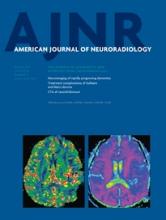Index by author
Jabbour, P.
- FELLOWS' JOURNAL CLUBNeurointerventionYou have accessCoiling of Large and Giant Aneurysms: Complications and Long-Term Results of 334 CasesN. Chalouhi, S. Tjoumakaris, L.F. Gonzalez, A.S. Dumont, R.M. Starke, D. Hasan, C. Wu, S. Singhal, L.A. Moukarzel, R. Rosenwasser and P. JabbourAmerican Journal of Neuroradiology March 2014, 35 (3) 546-552; DOI: https://doi.org/10.3174/ajnr.A3696
The long-term complications of coil treatment of giant intracranial aneurysms were assessed in 334 instances when treatment consisted of only coiling (225), stent-assisted coiling (88), parent vessel occlusion (14), or balloon-assisted coiling (7). The authors concluded that coiling of large and giant aneurysms has reasonable safety profiles with good clinical outcomes, but aneurysm reopening was common. Stent-assisted coiling had lower recurrence, retreatment, and new or recurrent hemorrhage rates with no additional morbidity compared with conventional coiling. Aneurysm size was a major determinant of recanalization, retreatment, new or recurrent hemorrhage, and poor outcome.
Jakubovic, R.
- BrainYou have accessToward Patient-Tailored Perfusion Thresholds for Prediction of Stroke OutcomeA. Eilaghi, C.D. d'Esterre, T.Y. Lee, R. Jakubovic, J. Brooks, R.T.-K. Liu, L. Zhang, R.H. Swartz and R.I. AvivAmerican Journal of Neuroradiology March 2014, 35 (3) 472-477; DOI: https://doi.org/10.3174/ajnr.A3740
Johnson, C.E.
- FELLOWS' JOURNAL CLUBBrainOpen AccessAppropriate Use of CT Perfusion following Aneurysmal Subarachnoid Hemorrhage: A Bayesian Analysis ApproachR.P. Killeen, A. Gupta, H. Delaney, C.E. Johnson, A.J. Tsiouris, J. Comunale, M.E. Fink, H.S. Mangat, A.Z. Segal, A.I. Mushlin and P.C. SanelliAmerican Journal of Neuroradiology March 2014, 35 (3) 459-465; DOI: https://doi.org/10.3174/ajnr.A3767
These investigators evaluated the test characteristics of CTP in patients with SAH for detection of delayed cerebral ischemia. Ninety-seven patients were assessed with CTP for ischemia and with DSA for vasospasm. The authors concluded that positive CTP findings identified patients who should be carefully considered for induced hypertension, hypervolemia, and hemodilution and/or intra-arterial therapy while negative CTP findings are useful in guiding a no-treatment decision.








